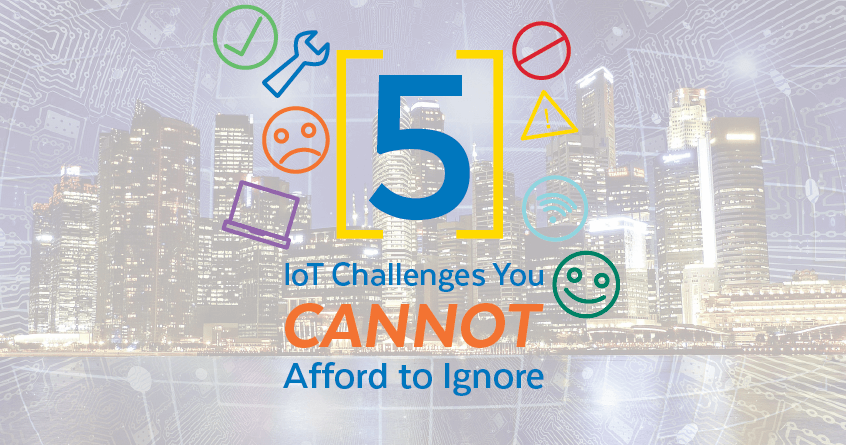It is an exciting time to be alive. Our world is in the middle of a digital revolution. The Digital Revolution (also called the Third Industrial Revolution) started around 1980 by creating the Internet and has progressed to mobile devices, social networking, big data, and computing clouds. The Internet of Things (IoT) is the most widespread modern technology to date. IoT aims to make things “smarter”—things like appliances, household items, industrial machinery, and more. It achieves this purpose through the collection of mountains of data.
Let us take the example of a wearable health monitor. Sensors are attached to the device to track things like brain, heart, and muscle activity. This activity data is transmitted to mobile devices or laptop computers through an active, open internet connection.
Although this is a simplistic account of this process, it is immediately apparent that there are some key challenges to managing such confidential IoT data. In this article, we will discuss five of the significant challenges of shared transmitted data.
1) Security

Hackers are not the only concern when it comes to IoT security, according to the IEEE:
“There are many reasons behind the state of insecurity in IoT. Some of it has to do with the industry being in its “gold rush” state, where every vendor is hastily seeking to dish out the next innovative connected gadget before competitors do. Under such circumstances, functionality becomes the main focus and security takes a back seat.”1
Cybersecurity will probably never be solved; however, the employment of data encryption, strong authorization, access controls, and even advanced AI monitoring tools can significantly enhance your data security.
2) Regulation
Here are some fantastic IoT facts:
- Every second, 127 new devices get connected to the internet.
- The IoT market revenue is $212 billion worldwide.
- As of the end of 2020, there are 20.4 billion IoT devices online.
- By 2025, the number of IoT devices is forecasted to reach 75 billion.2
Unfortunately, governmental regulatory standards cannot keep up with the dizzying pace of emerging IoT devices. The lack of strong IoT standards is a big part of why the IoT remains a severe security risk.
Consequently, there are ever more strident calls for increased liability on the part of manufacturers and providers.
Dr. Andreas Fink, chairman of M2M Alliance, states:
“Uniform standards and appropriate certificates would eliminate the greatest weak points from the outset. If we want to ensure that insufficiently protected hardware cannot become a mass phenomenon, the industrial, research and political sectors need to sit down and work together on solutions. That is one of the main goals we are currently pursuing, in the interests of all users as well as those of our member companies.”3
3) Compatibility
The colossal amount of new IoT devices that flood the market each year generates competition and many product choices for users. However, this can also cause big compatibility issues.
IoT technology is one arena where compatibility can be a particular challenge. Many brands and developers offer thousands of devices—each one designed to work on a propriety ecosystem—complete with separate mobile apps, tools, and gateways to support them. This fragmentation could spell disaster.
To help address this problem, the Open Interconnect Foundation (currently known as the Open Internet Consortium or OIC). The OIC states its goal as follows:
“Open Interconnect Consortium (OIC) is a standard and open source project that delivers ‘just works’ interconnectivity for developers, manufacturers, and end-users. OIC was formed by leading technology companies with a goal to defining the connectivity requirements and ensuring interoperability of the billions of devices that make up the emerging Internet of Things (IoT), across multiple operating systems and network protocols.”4
The OIC currently boasts a membership of over 300 companies, including such giants as Samsung Electronics, Intel, Microsoft, Qualcomm, and Electrolux.
It is important to note that users have a key role in the continued compatibility of their devices. When different software versions of IoT devices have to interact, it is vital that users keep all their devices updated and patched at all times.
4) Bandwidth
Many IoT devices are wireless, while others are connected. Most of these devices use very little bandwidth; however, the sheer number of them and the fact that these numbers increase daily means increased bandwidth will be needed.
The fact that IoT networks authenticate and direct traffic via the server-client model, which employs a centralized server, compounds this problem. This alone tends to make IoT connectivity a more significant challenge than might be expected. Some experts express concern that bandwidth-intensive IoT applications will soon grapple for space.
IoT companies must thoroughly scrutinize connectivity providers and choose one with a strong service and innovation record. It is important to look for features like intelligent switching between mobile network operations (MNOs), which help produce reliable, user-friendly products for their customers.
5) Customer Expectations
With the continual influx of IoT devices—internet-connected televisions, cars, refrigerators, wearable tech gadgets, smartphones, computers, and more—intense competition ensues.
Customer expectations are high. Under-promise and over-deliver are more vital than ever before because, if your product does not meet expectations, customers will move on quickly.
Businesses entering this hyper-competitive and innovative sector must be prepared for a market that is in constant flux and whose customers are demanding and fickle. Customers want safe, user-friendly devices that make their lives easier and more enjoyable. Meeting these expectations spells success for those companies that surmount and conquer this challenge.
Our Advice
The IoT sector is full of promise and excitement. It changes the way our society lives, works, and plays. However, as we have been discussing, there are many challenges. With these difficulties in mind, here are some things to consider:
- Become aware of and educate yourself about risks.
- Use biometric passwords to protect your devices.
- Back up data frequently.
- Find out about a device before you buy it. Read the fine print. Ask questions.
- Limit the amount of personal information you share.
Learn more on smart technology security risks here.
____________________________
2 Review 42: Internet of Things, Statistics, Facts, & Predictions (2020’s Update)
3 IoTGN Press Release: IoT: Lack of Standards Becoming a Threat



